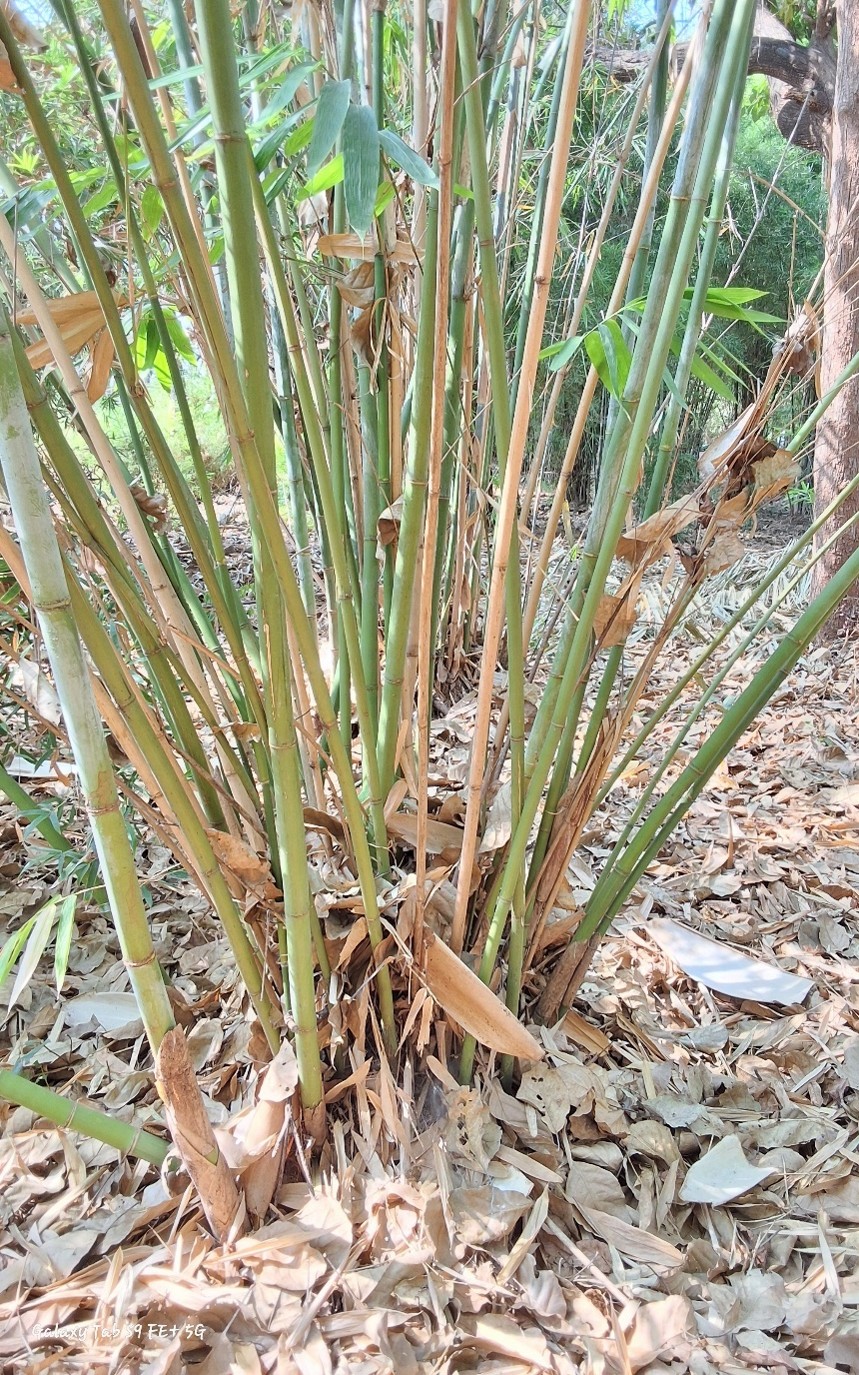Bambusa longispiculata

Bambusa longispiculata
Bambusa longispiculata, also known as Long-spiked Bamboo or Jati Bans in Assamese, is native to Northeast India, specifically Assam and Meghalaya, and has been introduced to Bangladesh, Myanmar, and Thailand. It thrives in tropical and subtropical regions, especially in riverine areas and moist deciduous forests. This bamboo species grows at elevations up to 600 meters and prefers well-drained alluvial soils, with loamy to sandy textures being ideal.
The culms of Bambusa longispiculata are caespitose and clumping, reaching a height of 15 to 25 meters and a diameter of 6 to 12 cm. The culms are light green in color, turning yellowish as they age, with internodes that range from 25 to 40 cm in length. The culm sheaths are green when young and turn straw-colored and deciduous with age. The adaxial surface is smooth, while the abaxial surface is covered with short, soft brown hairs. The sheath margins are ciliate and taper above.
The leaves of Bambusa longispiculata are narrow lanceolate, measuring 20-30 cm in length and 3-6 cm in width.
The inflorescence consists of large panicles with long spikelets, 2-4 cm in length. The empty glumes are ovate, acute, and many-nerved, while the flowering glumes are narrow with ciliate edges and pointed tips. The stamens are prominently exserted, with glabrous anthers and a pubescent style. The flowering cycle occurs every 40-60 years, with the last flowering reported in Assam and Meghalaya between 1988 and 1993. Seed production is limited, with few seeds that have moderate germination potential.
Bambusa longispiculata is propagated through rhizome offsets, culm cuttings, and tissue culture techniques. It is commonly used as a construction material for scaffolding and housing, as well as in the pulp and paper industry. Additionally, it provides edible bamboo shoots, is used for furniture and handicrafts, and serves in fencing and barriers. This bamboo is also valuable for soil stabilization along riverbanks.
Listen Audio:
Need assistance? BRTC Faculty